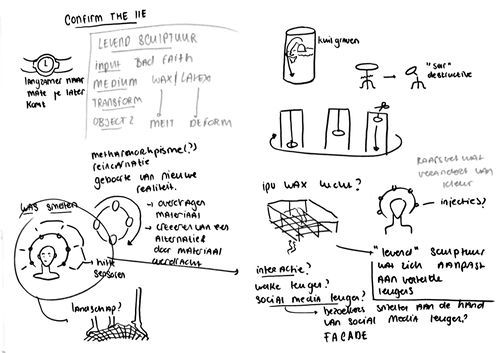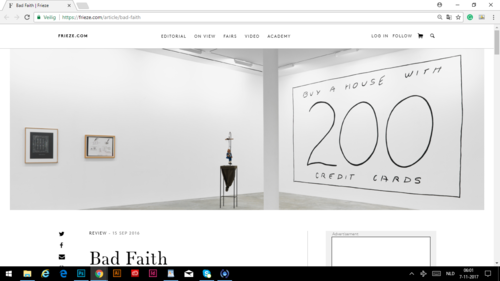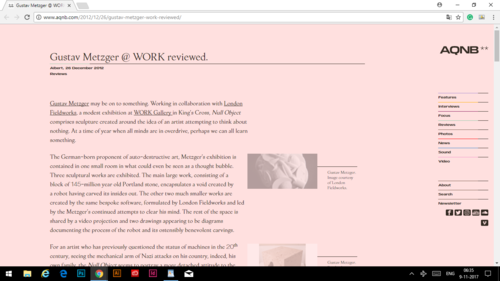User:Jeanine Verloop/minor q14
>>> sketch <<<
Mauvaise foi
QUARTER 14
sketch
research
experiments
RESULTS
Contents
How to be human
I am someone who watches the people around me closely. Every human has this one defining characteristic that makes them who they are. But humans, in general, are more complex. I started thinking about several things I find fascinating about us humans.
The experience of pain. Somehow we are drawn to pain, pain as some sort rite of passage? Humans are the only species to hurt themselves out of tree will.
Human frailty, mental disorders.There is some raw truth in a mental collapse. I have a great fascination for the infinity of alternative scenarios the mind can come up with for the accepted reality.
The ability to lie. The ability to imagine what it is to be someone else.
The ability to imagine the future, the sense of tommorrow.
The greed for importance. The 7 deadly sins as a way to describe human behavior.
The ability to lie
My friend helped me to narrow it down by asking what the latest lie was that I told. Wich was that I was getting somewhere with thinking about what to do in quarter 14. As defined by Sartre, "mauvaise foi" "bad faith" is lying to oneself. Specifically, it is failing to acknowledge one's own ability to act and determine one's possibilities, falling back on the determinations of the various historical and current totalization which have produced one as if they relieved one of one's freedom to do so.
"Mauvaise foi "Bad faith
Satre's focusses on the radical freedom that faces every human being. In the absence of any fixed human nature or absolute, external standards, we must all become responsible for whatever choices we make. Sartre recognized, however, that such freedom was too much for people to handle. A common response, he argued, was to use their freedom to deny the existence of freedom — a tactic he called Bad Faith (mauvaise foi). Bad faith in an attempt to avoid the angst which accompanies the realization that our existence has no coherence except for what we ourselves create.
Bad faith is a lie we tell ourselves to prevent short time pain, we force ourselves to believe something we are not fully convinced by because it is easier. We escape responsibility in fooling ourselves that there was for example no other choice we could have made.
Sartre’s conception of bad faith is closely related to Heidegger’s idea of “fallenness.” According to Heidegger, we all have a tendency to allow ourselves to become lost in present concerns, a consequence of which is that we become alienated from ourselves and our actions. We come to see ourselves as if from the outside, and it seems as though we don’t make choices in our lives but instead are simply swept along by the circumstances of the moment.
Critical to Heidegger’s conception of fallenness are gossip, curiosity, and ambiguity. The term gossip is for all those shallow conversations in which one simply repeats accepted “wisdom,” reiterates cliches, and otherwise fails to communicate anything of importance. Gossip, according to Heidegger, is a means of avoiding authentic conversation or learning by focusing on the present at the expense of possible futures. Curiosity is the insatiable drive to learn something about the present for no other reason than that it is “new.” Curiosity drives us to seek out momentary pursuits that in no way help us in the project of becoming, but they do serve to distract us from the present and from having to deal substantively with our lives and choices. Ambiguity, is the consequence of a person who has given up on trying to actualize their choices and make the most of any commitment which might lead to a more authentic self. Where there is ambiguity in a person’s life, there is a lack of real comprehension and purpose — no direction that a person is trying to move in for the sake of an authentic life.
sketch for Q14
INITAL THOUGHTS I know I want to make a machine that produces something, that something can be a product or reaction.
auto destructuctive
A machine wich only purpose is to selfdestruct. I want the selfdestruction to be a intriguing proces. Auto-Destructive Art (ADA) is a form of art coined by Gustav Metzger. Taking place after World War II, Metzger wanted to showcase the destruction created from the war through his artwork. The term was invented in the early 1960s. Auto, meaning self, and destruction, meaning causing damage to, this art movement highlights how objects can create self-harm.
Bad Faith
First thoughts;A machine that lies to itself to prevent short-term pain, but ends up with a long-term problem.
sketches
My main idea was to make a living sculpture. I wanted to achieve that by making wax melt (because of the lie it had been told) and dripping in a new mold. Thus transforming the object in a way that it would not recognize itself anymore, as a metaphor for the impact lying to yourself has.
As suggested I will deeper research "Mauvaise Foi" and set up a plan.
links
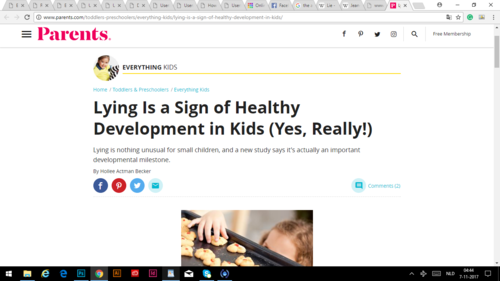 Lying is a sign of healthy development in kids
Lying is a sign of healthy development in kids
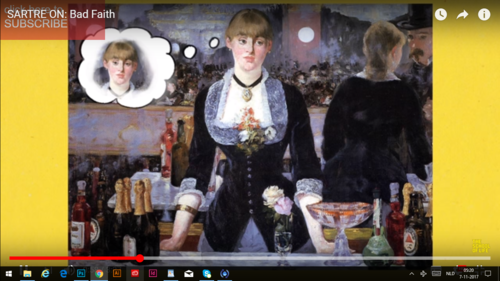 short explanation SARTRE ON: Bad Faith
short explanation SARTRE ON: Bad Faith
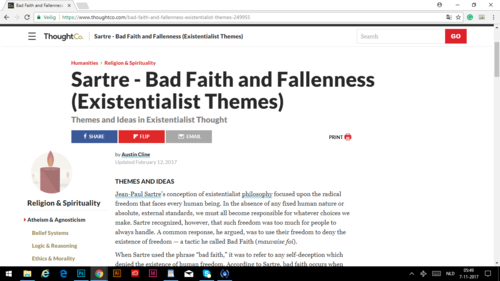 [Sartre - Bad Faith and Fallenness (Existentialist Themes)]
[Sartre - Bad Faith and Fallenness (Existentialist Themes)]
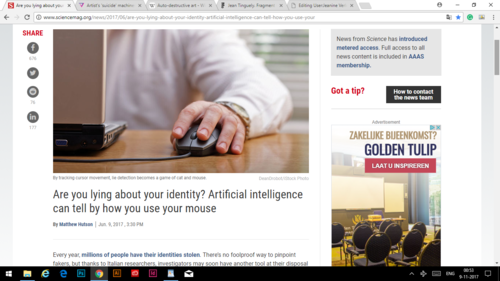 Are you lying about your identity? Artificial intelligence can tell by how you use your mouse
Are you lying about your identity? Artificial intelligence can tell by how you use your mouse
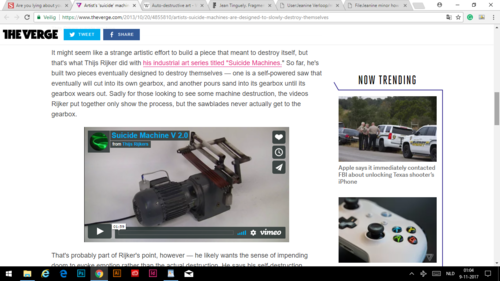 Artist's 'suicide' machines are designed to slowly destroy themselves
Artist's 'suicide' machines are designed to slowly destroy themselves
